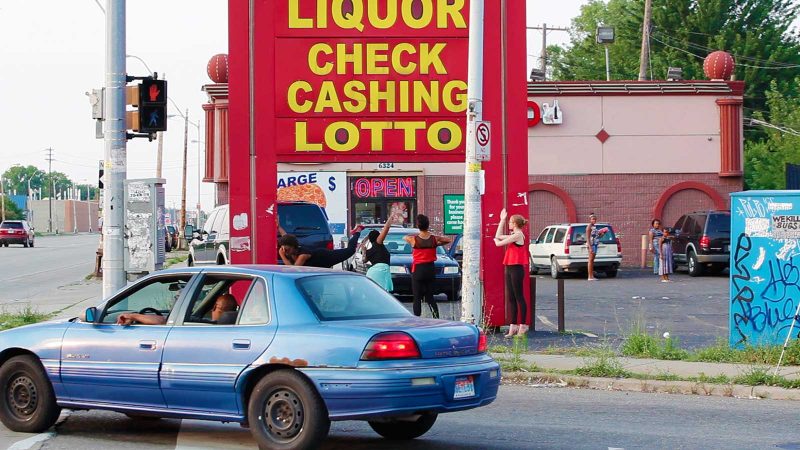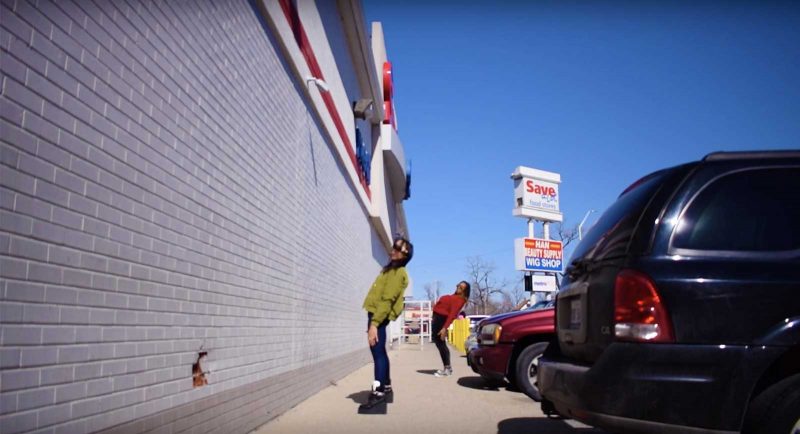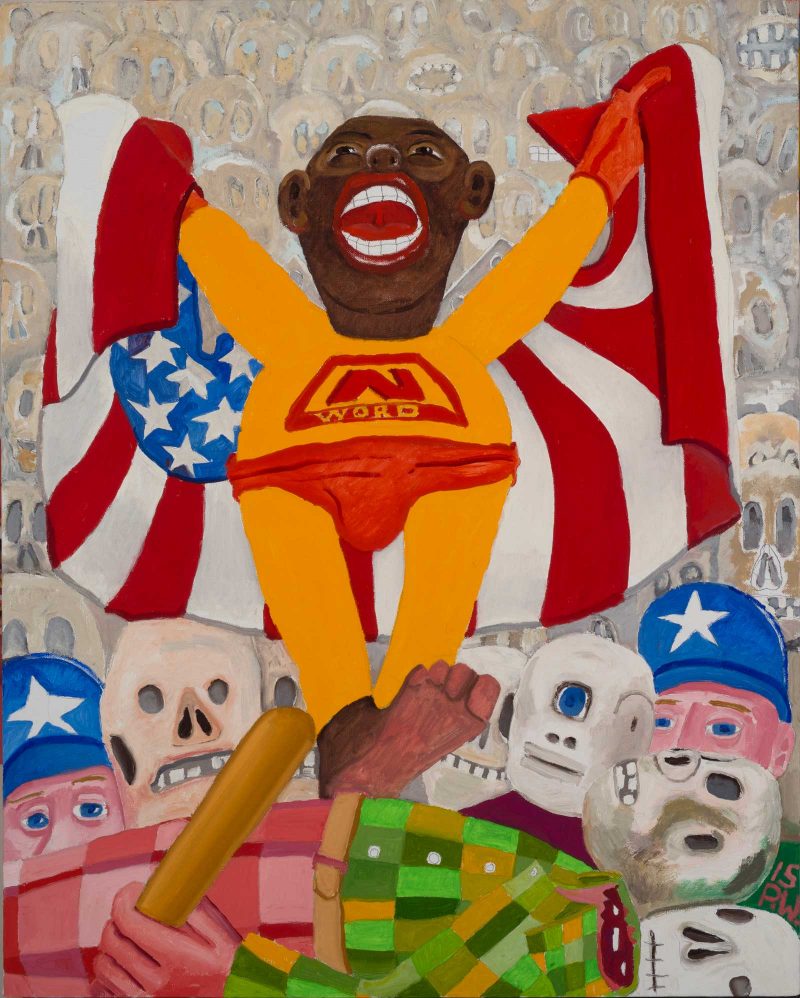Maya Stovall “Liquor Store Theatre” (Duke University Press, Durham and London: 2020) ISBN 978-1-4780-1112-5 (paperback), publication date: November, 2020
Harriet’s Bookshop; Duke University Press; Barnes and Noble

Maya Stovall is an artist and anthropologist and combined both disciplines for her PhD research; this book documents part of that process. Over a period of six years Stovall interviewed residents of the McDougall-Hunt section of Detroit. It was once part of a vibrant, African-American neighborhood, but by the beginnings of Stovall’s work, in 2014, its approximately 1000 residents had a median per-capita income of $13,000.
The subprime mortgage crisis of the early 2000s was only the most recent blow to the neighborhood, and Stovall documents specific instances through the centuries of structural racism behind the environment of the Black Detroit residents she met. They share none of the wealth of Detroit’s renewed downtown area but are close enough geographically that gentrification hovers in the air. In fact, they were in the midst of a crisis in which the Detroit Water and Sewerage Dept. shut off service to massive numbers of residents who were behind in payments; in the face of COVID-19, Michigan’s governor would insist that the Department restore services.
Stovall chose the eight liquor stores in the neighborhood because of their dense presence and the fact that they were patronized mostly by local residents. In some cases their parking lots had become public gathering places, in lieu of parks and public squares. She and the dancers who collaborated in her performances would site themselves and a video camera in view of the store entrances and their dance became a prompt. Residents had to approach her and begin a conversation. They’d ask what she was doing and she would explain that she was studying people who lived in the neighborhood and their attitudes to the city, and ask them to participate. Four of these conversations, initially filmed on site, lead to longer and intimate relationships where Stovall met entire families and had repeated interactions in varied situations. She has exhibited some of the performance videos in art exhibitions, including the 2017 Whitney Biennial.

Stovall is as self-reflective as any responsible anthropologist and throughout the book she situates her project in terms of theory from anthropology, art, performance studies, geography, political science and numerous other fields. She systematically documents the history of racialized public and private decisions that has hemmed in the neighborhood and cut it off from almost the entire range of urban amenities. And the same story could be told about cities across the U.S.. But the interest many will find here is the unexpectedness and complexity of the lives she reveals. Residents share memories and discuss neighborhood changes, talk about their experiences with family and work, housing, shopping, education, transportation, and their understanding of the forces that have shaped their lives. These are individuals, not subjects, and Stovall offers the particularities that good storytelling requires. Once we are able to see them as individuals, the residents of McDougall-Hunt are hard to ignore.
“Liquor Store Theatre” was on view through Aug. 5 as part of Art Mile Detroit
[Author’s note: The second book has Detroit connections through its publisher, as well as the fact that the artist taught at Wayne State University for seventeen years before moving to the University of Delaware.]
“The N-Word; Paintings by Peter Williams” (Rotland Press, Detroit, 2016) no ISBN
Museum of Contemporary Art Detroit (MOCAD); Rotland Press

Peter Williams began three of the paintings illustrated in this book in 2014 after the death of Michael Brown in Ferguson, MO. He began the rest in 2015 in response to the killing of Eric Garner in New York. Unfortunately, they have lost none of their relevance. The earlier paintings respond to the late work of Philip Guston, whose comment about his turn from abstraction resonated with Williams: “What kind of man am I, sitting at home, getting into a frustrated fury about everything and then going into my studio to adjust a red to a blue?” The paintings are poster-like and rendered in blue, rather than black, and white, with red banners at the top – Guston’s red and blue put to use for political commentary on the murder of black men.
The later paintings depict a revenge-fantasy superhero, “The N-Word.” With clothing akin to Superman, a U.S. Flag as a cape and and “N word” on his chest, he appears in scenes of recent, racist violence. As a young child he is already in the midst of fighting and conflict. The grown hero flies above a crowd of policemen brandishing clubs, having grabbed one of them by the neck; he holds a camera as he witnesses Eric Garner’s death; and he rises, triumphant over a decapitated body still holding a stick as a crowd of policemen and skeletons look on.
The paintings are united by their Crayon-bright colors and style derived from comic-book vernacular. Words seep into the images rather than remain in speech bubbles; sometimes they contain dialog, in others they label objects in the manner of political cartoons. They speak in a loud voice and demand attention. They are not polite. And despite their overtly-simple manner of address they are complex paintings that reference the history of art and speak to the state of the country.
This book is small-scale but very handsomely-produced, with illustrations in full color.
It includes an introduction by Ryan Standfest, a conversation between the artist and writer Bill Harris, and a fictional story by Lynn Crawford that was inspired by Williams’ work. His paintings are in museum collections across the U.S. and have been exhibited widely but this is the most substantial publication of his work to date. It deserves a follow-up, but is a good introduction to a mature artist with a lot to say.
Williams’ exhibition “Black Universe” is on view through Oct. 10 at Louis de Jesus Los Angeles and in Detroit at both the Museum of Contemporary Art and Trinosophs through Jan. 21, 2021.





